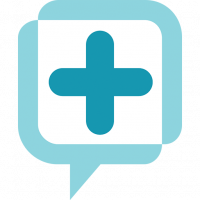Tightening in your chest? Shortness of breath? Heart palpitations? If you are anything like me, when these symptoms arise, my mind immediately goes into a panic that it is COVID-19. But what many, including myself, are realizing during this unprecedented time is that anxiety is setting in and can mimic some of the symptoms of the coronavirus. Understanding the differences between COVID-19 and anxiety is important. Therefore, if you are in fact experiencing anxiety, recognizing the symptoms can help you avoid the additional stress that it may be the virus.
Symptoms of Anxiety
Even though each individual suffering from anxiety may have unique symptoms, there’s a common experience associated with anxiety: irrational fear and dread. For instance, if you’ve been particularly worked up and stressed about the virus and thinking about an unclear future, that’s likely a sign that you’re experiencing more intense anxiety than usual.
Comparatively, extreme anxiety can lead to panic attacks that have some of the symptoms of COVID-19:1
- Heart racing, pounding, or skipping
- Sweating
- Trembling or shaking
- Shortness of breath
- Feelings of choking
- Chest pain or discomfort
- Nausea or an upset stomach
- Dizziness, unsteadiness, or feeling like fainting
- Chills or heat sensations
- Tingling or numbness in parts of your body
According to Psychology Today, although no one knows exactly what the next weeks or months will hold, many strategies can successfully address the anxieties that emerge during this time. These include physical steps such as prioritizing sleep and staying active, and emotional support such as challenging unhealthy thoughts and calling family and friends.
However, aside from the similarities, there are also some major differences between the sets of symptoms of anxiety and COVID-19 that are important to keep in mind.
Symptoms of COVID-19
As for symptoms of COVID-19, the Centers for Disease Control and Prevention (CDC) states that people with COVID-19 have had a wide range of symptoms reported – ranging from mild symptoms to severe illness.
Symptoms may appear 2-14 days after exposure to the virus and may be a combination of symptoms.
People with either of these symptoms may have COVID-19:2
- Cough
- Shortness of breath or difficulty breathing
Or at least two of these symptoms:
- Fever
- Chills
- Repeated shaking with chills
- Muscle pain
- Headache
- Sore throat
- New loss of taste or smell
Summary
If you already know you have anxiety, don’t forget to keep doing what works. Likewise, if the feelings you are having seem like anxiety and are new to you, find ways to help yourself manage the symptoms. Some people have success with meditation, others find exercise helps them more. Whatever it may be, understanding what you are experiencing is key!
How Hospital Marketers Can Help
Medicom Health’s Anxiety HRA is offered at no-cost through June 2020. We are also proud to offer a COVID-19 HRA at no cost to provide a resource for health systems to offer to community members who may be navigating these fears and trying to determine what their symptoms mean. These two assessments can help people in your community figure out if what they are experiencing is anxiety or COVID-19.
References:
1 American Psychiatric Association. Anxiety Disorders. Fifth Edition. In: American Psychiatric Association, Diagnostic and Statistical Manual of Mental Disorders, Fifth Edition. Arlington, VA, American Psychiatric Association;2013:208.
2 Centers for Disease Control and Prevention. Symptoms of Coronavirus.
https://www.cdc.gov/coronavirus/2019-ncov/symptoms-testing/symptoms.html. Accessed: May 6, 2020.
3FACE COVID provides a series of steps for dealing with fear and anxiety in the time of COVID-19















 Thank you for your interest.
Thank you for your interest.